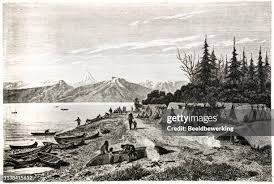The history of Canada from 1860 to 1950 is a remarkable tale of transformation, nation-building, and cultural evolution. During these pivotal years, Canada transitioned from being a cluster of British colonies to an independent nation playing a significant role on the global stage. This period was marked by milestones in Confederation, immigration, industrialization, and the challenges of two World Wars.
Confederation and the Birth of Canada (1860–1900)
By the 1860s, the colonies of British North America were grappling with economic, political, and security challenges. The United States’ Civil War (1861–1865) underscored the need for unity among these colonies. The push for Confederation culminated in the British North America Act of 1867, which united Ontario, Quebec, New Brunswick, and Nova Scotia into the Dominion of Canada. This act laid the groundwork for Canada’s federal structure, allowing provinces to retain control over local matters while establishing a central government.
Canada expanded westward during this period. The purchase of Rupert’s Land from the Hudson’s Bay Company in 1870 added vast territories to the young nation. This expansion, however, often came at the expense of Indigenous peoples, whose lands were taken and cultures marginalized. The creation of the Canadian Pacific Railway (completed in 1885) linked the eastern provinces with British Columbia, encouraging migration and economic development.
The Era of Immigration and Growth (1900–1914)
The early 20th century was marked by waves of immigration. Seeking to populate the prairies, the Canadian government actively promoted settlement, offering land to European and American settlers. This period saw diverse ethnic groups, including Ukrainians, Scandinavians, and Chinese laborers, contributing to Canada’s growing multicultural landscape.
Immigration policies, however, reflected the racial biases of the time. Asian immigrants faced exclusionary measures, such as the Chinese Immigration Act of 1885, which introduced a head tax, and the Continuous Journey Regulation of 1908, which effectively barred South Asians.
World War I and Its Aftermath (1914–1939)
Canada’s participation in World War I marked a defining moment in its national identity. Although still a dominion of Britain, Canada’s significant contributions on the battlefield, such as at Vimy Ridge in 1917, fostered a sense of independence and pride. The war also had profound social and economic impacts, with women entering the workforce in large numbers and gaining the right to vote in federal elections by 1918.
The interwar period brought both prosperity and hardship. The 1920s were years of economic growth, industrialization, and cultural change. However, the Great Depression of the 1930s hit Canada hard, leading to widespread unemployment and poverty. Federal relief programs and public works projects, such as the construction of bridges and roads, were introduced to mitigate the crisis.
World War II and a New Global Role (1939–1950)
Canada once again answered the call to war in 1939. The country played a critical role in the Allied effort during World War II, contributing troops, supplies, and industrial support. The war catalyzed economic recovery and brought women into the workforce in unprecedented numbers, a shift that had long-term implications for gender equality.
On the home front, Canada became a haven for war refugees and an advocate for international cooperation. The country’s contributions to the founding of the United Nations in 1945 reflected its growing status as a middle power with an independent voice in global affairs.
Cultural and Social Evolution
The years from 1860 to 1950 also saw significant cultural changes. Indigenous peoples faced continued displacement and cultural assimilation efforts, including the tragic legacy of residential schools. At the same time, French-English relations remained a central theme in Canadian politics. The province of Quebec sought to preserve its distinct identity while participating in a federal system.
Canada’s evolving identity was also reflected in its arts and literature. Writers such as Lucy Maud Montgomery and painters like the Group of Seven celebrated the Canadian landscape and culture, contributing to a growing sense of national pride.
Conclusion
Between 1860 and 1950, Canada underwent profound changes, transforming from a loose federation of colonies into a confident, independent nation. While these years were marked by challenges, including conflicts over cultural identity and economic crises, they also showcased Canada’s resilience and commitment to building a diverse and inclusive society. Today, the events of this transformative era remain a cornerstone of Canada’s rich history, shaping its values and vision for the future.
Keywords for Search Engines
Canada history timeline, Confederation Canada 1867, immigration to Canada 1900, Canada WWI contributions, Great Depression Canada, WWII Canada, Canadian Pacific Railway history, Vimy Ridge, Indigenous history Canada, French-English relations Canada, Canadian cultural evolution, Group of Seven artists, Lucy Maud Montgomery, residential schools Canada, nation-building Canada 19th century, Canada immigration policy, United Nations founding Canada.
References
- Canadian Encyclopedia Editors. The History of Canada. Historica Canada, 2024.
- Granatstein, J.L. Canada and the Two World Wars. HarperCollins Canada, 2010.
- Foster, John E. The Developing West: A History of Canada’s Expansion. University of Alberta Press, 1993.
- Miller, J.R. Skyscrapers Hide the Heavens: A History of Indigenous Peoples in Canada. University of Toronto Press, 2000.
- Perry, Adele. Immigration and Multiculturalism in Canada. Oxford University Press, 2007.
- Morton, Desmond. A Short History of Canada. McClelland & Stewart, 2006.
- Government of Canada. Canadian Pacific Railway and Its Role in National Unity. Canadian Heritage, 2022.
This comprehensive history article aligns with the Canadian Council on Progressive Education‘s mission of promoting learning through accessible educational resources.











